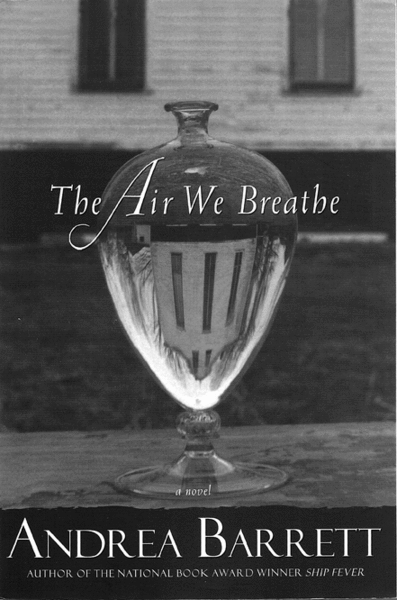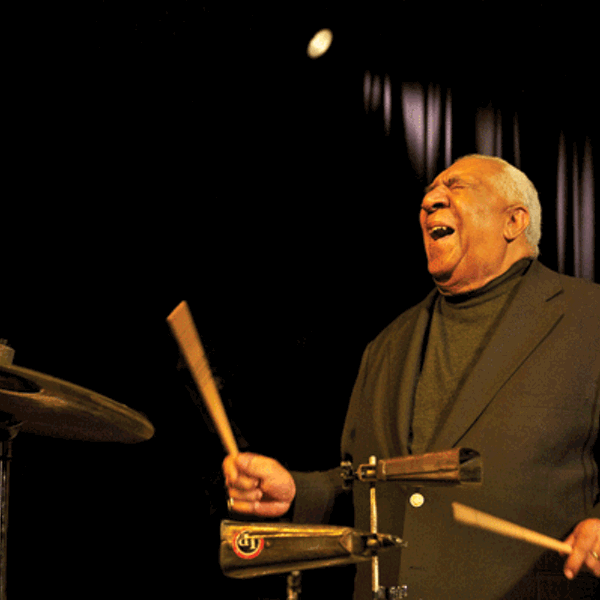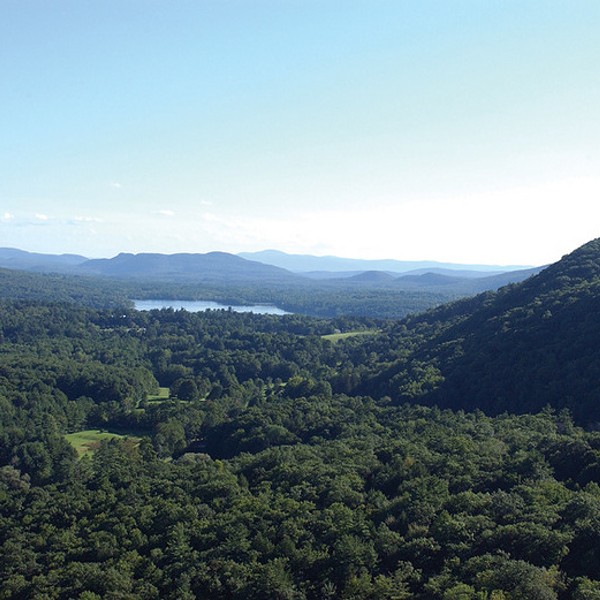At the start of Andrea Barrett’s extraordinary new novel, The Air We Breathe, we meet Leo Marburg, a Russian-born immigrant living in New York City in 1916. Trained as a chemist in the Old World, Leo is nothing more than a common laborer in America until he contracts tuberculosis. The symptoms reveal themselves at the sugar plant where he works: “Then he’d coughed—the same cough he’d had all spring, no more—and watched, astonished, as blood sprayed the pale crystals.” A co-worker reports Leo’s illness to the authorities and “once the government was involved, one step led to the next and the next, until he was cornered and forced up here.” “Here” is Tamarack State, a tuberculosis sanatorium in the Adirondack Mountains.
Leo’s arrival at Tamarack is a kind of baptism into a new life. He is immediately bathed by a nurse and tucked into a white-enamel bed, one of many with “top sheets … pulled so taut that the edges hovered above the blankets.” The care at Tamarack is surprisingly humane; rest and good food and fresh air are the key elements of the TB cure. The immigrant patients and their caregivers are intelligent, thoughtful people with European educations, entirely swept up in the scientific, artistic, and social excitements of the time. Their discussions range from Roentgen’s rays, Einstein’s theories, and Jewish communal farms in upstate New York to Stravinsky’s music, the “new poetry” of Carl Sandburg, socialism, suffrage, and cinematography (the art that “freezes light, storing it like ice in an icebox”).
Occupying the world beyond Tamarack is The War—World War I. In France, soldiers are gassed, their lungs—like those of the tubercular patients—corrupted and destroyed. Eventually, the war enters the sanatorium, in the form of the vigilante-style American Protective League, leery of Tamarack’s “constantly changing population … some far from savory and a great many foreign-born.” More crucially, suspicion and jealousy contaminate Tamarack society from within. Order and civility corrode. This finely-wrought community erupts in a terrible and sudden conflagration: “How fast does chaos arrive? Faster than we can say it.”
Readers are led through the events at Tamarack by a wonderfully odd and effective narrator, a plural “we” that represents the 60 men and 60 women who reside there. This communal narrator watches, records, reflects, and comments on the events that begin with Leo’s arrival, chronicling the human interactions that grow ever more emotionally fraught, as they play out in this insular world. The narrative voice leads us gently but inexorably toward inevitable disaster. Then the voice searches for blame; examines its own individual and collective conscience; pines for absolution; and, finally, devises its own self-imposed penance.
Barrett has claimed a unique literary territory through her previous fiction, marrying science and imagination with great impact. Readers of The Air We Breathe will be pleased to reencounter characters from the 1996 National Book Award winner Ship Fever, the 2003 Pulitzer Prize finalist Servants of the Map, and The Voyage of the Narwhal. Here, once again, Barrett has woven science and story into a seamless narrative. By the end of the novel, readers have become an intimate part of Tamarack society, fortunate to have been allowed in, elated and humbled by the experience: “This is what happened, we say together. This—this!—is what we did.”
Andrea Barrett will read at the New York State Writer’s Institute on November 1.
For more information, (518) 442-5620; www.albany.edu/writers.

















